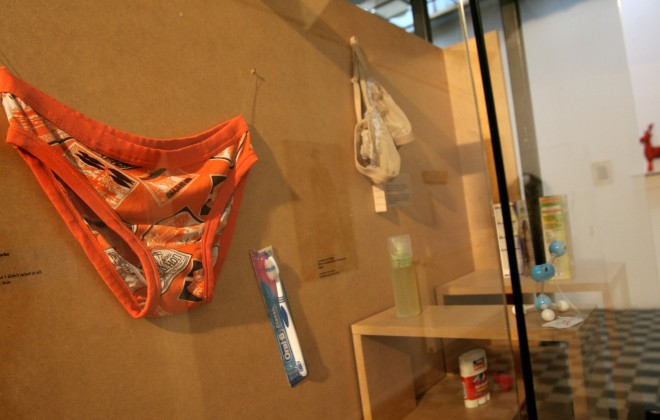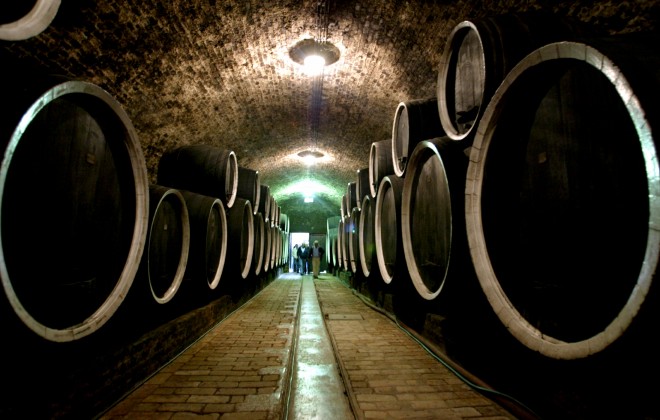
By now we all know what’s on the Croatia bucket list – the Plitvice Lakes National Park, Dubrovnik’s medieval walls, and at least one of Croatia’s growing roster of music festivals. However there’s a lot more to Croatia than meets the eye, so it’s well worth planning a few detours to take in some of the country’s contemporary architecture, offbeat attractions and unforeseen cultural connections.
Heartbreak House: Zagreb’s Museum of Broken Relationships
For a voyage into the more tumescent recesses of the human psyche, there are few better starting points than Zagreb’s Museum of Broken Relationships – a travelling art installation that became a permanently grounded museum in 2010. Based on mementoes donated by the public, it’s a compelling and unique museum of wistful memory and raw emotion, with exhibits ranging from garden gnomes to prosthetic limbs. Each is accompanied by a text explaining why it was so significant to the donor – some are touching, others quite kinky; and quite a few belong to the obsessive world of a David Lynch movie.
Adriatic Modernism: stay in the Hotel Lone
Throughout the 1960s and 70s the Adriatic coast experienced a boom in contemporary architecture, and there are signs that Croatia’s modernist traditions are making a comeback. Looming out of the trees above Lone Bay, just outside the chic Istrian resort of Rovinj, the amoeba-shaped Hotel Lone was designed by Zagreb architects 3LHD, and filled with furnishings, textiles and artworks supplied by Croatia’s leading creatives. Completed in 2011, it’s a rare example of a new Adriatic hotel that functions as both luxury accommodation and complete work of art. If you can’t afford a room, peek inside the circular lobby to see Ivana Franke’s geometric installation Room for Running Ghosts, or the textile wall-hangings knocked up by Zagreb fashion designers I-GLE.
Meet the ancestors (I): Krapina Neanderthal Museum
The discovery of Neanderthal bones near Krapina in 1899 puts this small north-Croatian town firmly on the European prehistory map. However, it took until 2010 for Krapina to get the museum it deserved – an ambitious, ultra-modern, hillside-hugging structure that is little short of a museum of life, the universe and everything. Visitors ascend a spiral pathway, confronting stages in the earth’s development from big bangs onwards. And as a tour de force in evolutionary theory, the museum seems guaranteed to send creationists squealing for the exits. The most entertaining aspects of the museum are devoted to the Neanderthals themselves – a film featuring human actors in prosthetic masks re-creates a day in the life of a Neanderthal tribe, and the display culminates in a diorama featuring startlingly lifelike Neanderthal dummies.

Meet the Ancestors (II): Varaždin Cemetery
Few European cemeteries are as restful and meditative as the city graveyard in Varaždin, a minor horticultural masterpiece that was very much the life’s work of park keeper Hermann Haller (1875-1953). A serious student of European graveyards, Haller came to the conclusion that cemeteries should be life-enhancing public parks, rather than the sombre preserve of wreath-laying mourners. He accordingly planted row upon row of conifers, carefully sculpted into stately green pillars that towered over the graves themselves – thereby providing “quiet and harmonious hiding places” for the deceased, as Haller himself explained. It’s also something of an outdoor art gallery too, with a wealth of fine funerary sculpture in amongst the greenery.
The medieval meets the modern: Novigrad Lapidarium
If there was a league table for outstanding small museums of the world then Novigrad’s Lapidarium would surely end up somewhere in the top ten. Designed by Rijeka-based architects Randić and Turato, the innovative structure consists of two black-box exhibition spaces enclosed within a glass pavilion. The exhibits feature some fabulous examples of stone carving taken from Novigrad’s medieval churches. Animated gryphons, strutting peacocks and swooning cypresses exemplify the lust for beauty in early Croatian art.
Adriatic Icons: Orson Welles
Head for the Joker shopping centre, northeast of central Split, and you’ll come face to face with a bolero-wearing bronze sculpture of Hollywood director Orson Welles. The statue was designed by Welles’s long-time companion, Croatian-born actress and sculptor Oja Kodar, who he met while shooting gloomy central European exteriors for his adaptation of Kafka’s The Trial in Zagreb in 1961. Croatia became a second home to Welles, who acted in local-made films (including the partisan war epic Battle on the Neretva in 1969), had a holiday villa at Primošten, and – according to local lore – was an eager follower of Hajduk Split football team.
Twenty-first century townscapes: The Sea Organ and Greeting to the Sun
This wave-powered musical instrument, which also serves as vantage point from which to observe the sunset, will soon lull you into a state of Adriatic bliss. Located on the seafront promenade in Zadar the organ consists of a broad stone stairway descending towards the sea. Wave action pushes air through a series of underwater pipes and up through niches cut into the steps, producing a selection of mellow musical notes. The organ’s architect, Nikola Bašić, also designed the Greeting to the Sun just up the seafront – a huge disk paved with light-sensitive tiles, which accumulate solar power during the daytime and radiate a seemingly random sequence of coloured lights at night. It’s absolutely hypnotic and enormously popular with tourists of all ages, who can spend hours here basking in the Greeting’s mood-enhancing glow.

Industrial Design Classics: the Rijeka Torpedo
It was the 19th-century naval yards of Rijeka that gave birth to the world’s first torpedo, built for the Austro-Hungarian navy by pioneering Croatian engineer Ivan Blaž Lupis and his English colleague Robert Whitehead. To see a surviving example however, you have to go to Split, where a surprisingly anonymous corner of the Maritime Museum plays host to one of Croatian engineering’s greatest triumphs. Looking like something out of a Jules Verne novel, this sleek cigar-shaped relic possesses an undeniably seductive aura.
Vampire Folklore: Jure Grando
Express an interest in vampires in today’s Croatia and you’ll probably be told that you’ve come to the wrong country – and yet belief in the supernatural creatures was widespread here until a couple of centuries ago. Europe’s first documented case of vampirism took place in the Istrian village of Kringa in the 1670s, when the nocturnal bed-hopping adventures of recently-deceased Jure Grando (and the subsequent stake-through-the-heart action taken by locals) was recorded for posterity by Slovenian chronicler J.J. Valvasor. Surprisingly, little has been made of this vampire heritage so far, save for a small Jure Grando museum in the centre of Kringa; the next-door Caffe-Bar Vampir is more welcoming than it sounds.
An Adriatic Rock Garden: Dubrovnik’s Orsula Park
For an open-air concert experience with a difference, head 3km east of Dubrovnik to find Orsula Park, a dramatically sloping area of shrubs and pathways commanding a famously jaw-dropping view of the walled city and its port. The park’s amphitheatre-style bank of seating is pressed into use each summer during the Mali Glazbeni Festival (Little Music Festival), a season of concerts that attracts many of the big local names in rock, rap and world music. Live gigs under the stars don’t come much better than this.


